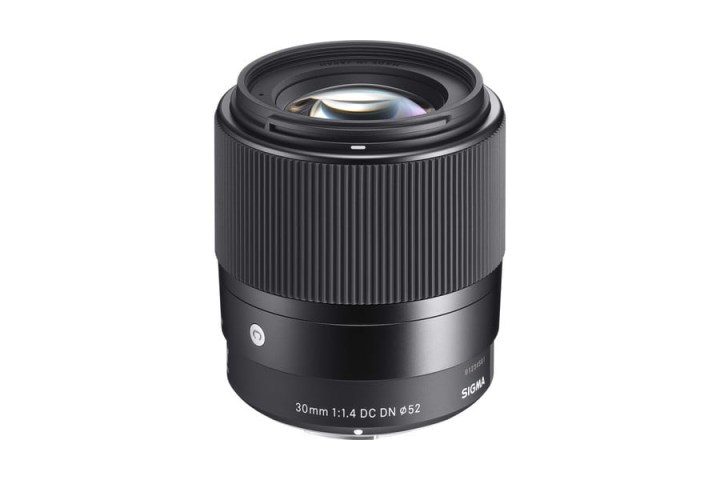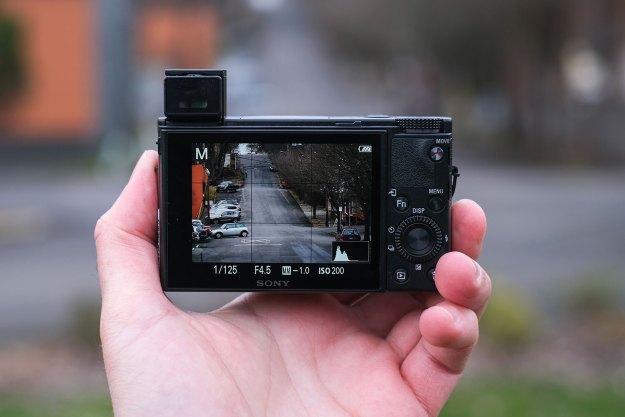Micro Four Thirds cameras may have smaller sensors, but that makes it easier to get lenses with more reach — and at sizes and prices that won’t break your back or the bank. The Micro Four Thirds mount is a standard format, which means you can mount a Panasonic lens on an Olympus camera and vice versa.
- At a glance
- Best Micro Four Thirds zoom lens: Olympus M.Zuiko 12-100mm F4 IS Pro
- Best Micro Four Thirds prime lens: Panasonic Leica DG Summilux 25mm F1.4 ASPH
- Best Micro Four Thirds wide-angle lens: Sigma 16mm F1.4 Contemporary
- Best Micro Four Thirds macro lens: Panasonic Lumix G Macro 30mm F2.8 ASPH Mega OIS
- Best Micro Four Thirds portrait lens: Olympus M.Zuiko 45mm F1.2 Pro
- Best cheap Micro Four Third Lens: Sigma 30mm F1.4 DC DN Contemporary Lens
The lens that’s right for you depends on your shooting style and the subject — so we’ve rounded up six of the best Micro Four Thirds lenses for a variety of situations.
At a glance
- Best Micro Four Thirds zoom lens: Olympus M.Zuiko 12-100mm F4 IS Pro
- Best Micro Four Thirds prime lens: Panasonic Leica DG Summilux 25mm F1.4 ASPH
- Best Micro Four Thirds wide-angle lens: Sigma 16mm F1.4 Contemporary
- Best Micro Four Thirds macro lens: Panasonic Lumix G Macro 30mm F2.8 ASPH Mega OIS
- Best Micro Four Thirds portrait lens: Olympus M.Zuiko 45mm F1.2 Pro
- Best cheap Micro Four Third Lens: Sigma 30mm F1.4 DC DN Contemporary Lens
Best Micro Four Thirds zoom lens: Olympus M.Zuiko 12-100mm F4 IS Pro

Why you should buy this: A mix of versatility, sharpness and stabilization that makes this lens one that seldom needs to leave the camera body
Who’s it for: Travelers or any photographer looking for zoom versatility
Why we picked the Olympus M.Zuiko 12-100mm F4 IS Pro:
Covering a range equivalent to 24-200mm on a full frame camera, the Olympus 12-100mm F4 IS Pro is one of the more versatile zoom lenses. From wide angle to telephoto and everything in between, the lens captures a range of different focal lengths, making it ideal for travel and any photographer that doesn’t want to stash multiple lenses in the bag.
But besides the versatility, that Pro in the name means one thing — sharpness. Unlike the cheap zooms, this Olympus lens is exceptionally sharp. The lens is also one of the few that allows cameras like the E-M1X to reach its maximum possible stabilization rating of 7.5 stops. With this lens, we shot 10-second exposures without a tripod, an impressive feat that can’t be matched on other camera and lens combinations.
While the lens is versatile and packs in high-end features, it’s still smaller than most 24-70mm full frame lenses. Weather-sealing is also integrated into the design — we shot this lens in rain, snow, and dust without any issues.
Between the versatility and the stabilization, the Olympus 12-100mm F4 IS Pro is one of the best zoom lenses for the Micro Four Thirds system, but only if you don’t need a bright aperture. Considering the long zoom range, f/4 is pretty decent here, but it won’t give you the depth of field control of lenses with wider apertures.
Read our Olympus M.Zuiko 12-100mm F4 AS Pro review
Best Micro Four Thirds prime lens: Panasonic Leica DG Summilux 25mm F1.4 ASPH

Why you should buy this: A bright aperture and sharp images without an extravagant price tag
Who’s it for: Any photographer looking for bright, mid-range glass from portraits to street photography
Why we picked the Panasonic Leica DG Summilux 25mm F1.4 ASPH:
A zoom may win for versatility, but a prime lens is what you need for those super-blurry backgrounds and sharp low light shots. The Panasonic Leica DG Summilux 25mm F1.4 ASPH is a well-loved lens by many photographers, sitting at the equivalent of the 50mm on a full-frame camera.
One of the chief praises for the glass is the bright f/1.4 aperture that lets in eight times as much light as the f/4 aperture on the Olympus 12-100mm F4 above. It also produces a shallow depth of field, keeping your subject sharp while the background blurs away. Photographers also praise this lens for its sharpness, color, and contrast.
Thanks to that Micro Four Thirds mount, the lens is also fairly compact and only weighs seven ounces. Some of that lower weight is due to a more plastic construction than newer lenses, but it still feels well made. Despite the Leica brand in its name, the Panasonic Leica DG Summilux 25mm F1.4 ASPH is not a terribly expensive lens, making it a good option for photographers of all levels.
Best Micro Four Thirds wide-angle lens: Sigma 16mm F1.4 Contemporary

Why you should buy this: Fast, wide-angle photos without the big price tag
Who’s it for: Landscape photographers, street photographers, and anyone after a wide-angle on a budget
Why we picked the Sigma 16mm F1.4 Contemporary:
The Sigma 16mm F1.4 Contemporary has several things going for it: a wide, 32mm-equivalent focal length, a bright aperture, and a price that’s easy on the budget.
The Contemporary line sits below Sigma’s high-end Art line, but the 16mm F1.4 produced some impressive images, regardless. The wide aperture gave nice bokeh that’s hard to come by on a wide-angle, while sharper results are possible when stopping the lens down. We also were impressed by the very minor distortion, which means straight lines stay straight, something that often poses a struggle for wide-angle lenses.
Despite being a more budget-friendly lens, the Sigma feels sturdy and is weather-sealed. The lens isn’t quite as small as some other Micro Four Thirds lenses — in part because it is also designed for larger ASP-C cameras — but it’s still compact compared to full-frame glass.
The Olympus 17mm F1.2 Pro is an even better wide-angle lens, but with a price over four figures, few can afford it. The Sigma 16mm F1.4 Contemporary is a lens for everyone else, with a good mix of quality and price.
Read our Sigma 16mm F1.4 Contemporary review
Best Micro Four Thirds macro lens: Panasonic Lumix G Macro 30mm F2.8 ASPH Mega OIS

Why you should buy this: Solid close-ups and image stabilization
Who’s it for: Aspiring macro photographers on a budget
Why we picked the Panasonic Lumix G Macro 30mm F2.8 ASPH MEGA OIS:
The closer the camera is the subject, the more pronounced the camera shake is — but the image stabilization on this Panasonic lens helps extend the potential for close-ups. Shooting macro is often a balance between using an aperture that’s narrow enough to keep the subject sharp but wide enough to allow for a fast shutter speed to eliminate camera shake. The OIS on this lens, especially when combined with in-camera stabilization, means you don’t have to worry as much about your shutter speed.
Producing a true 1:1 macro reproduction ratio, the Panasonic Lumix G Macro 30mm F2.8 ASPH Mega OIS can focus about four inches from the subject. While the 60mm equivalent may not be as ideal for skittish subjects such as insects, the lens allows for easy close-ups without dropping several hundred dollars on glass.
At 6.3 ounces, this is another Micro Four Thirds lens that isn’t going to weigh you down. While there are some longer focal length lenses with more high-end optics, the price of the Panasonic Lumix G Macro 30mm makes it a macro that fits almost any budget.
Best Micro Four Thirds portrait lens: Olympus M.Zuiko 45mm F1.2 Pro

Why you should buy this: Dreamy portrait quality meets excellent design
Who’s it for: Portrait photographers
Why we picked the Olympus M.Zuiko 45mm F1.2 Pro:
Between the 80mm equivalent focal length and the ultra-bright F1.2 aperture, the Olympus M.Zuiko 45mm F1.2 Pro creates the perfect mix for portrait photography. In fact, if it wasn’t for the smaller Micro Four Thirds sensor, the lens would be right in line with full-frame heavy hitters like the Sigma 85mm F/1.8.
The lens offers an excellent f/1.2 aperture with Olympus’ “feathered bokeh,” which produces softer, more gradual out-of-focus backgrounds and smoother blur circles. It is also incredibly sharp when shot wide-open, which makes it ideal for portraits.
Like other lenses in the Pro line, the Olympus M.Zuiko 45mm lens has a durable build with a metallic construction. The lens is also splash proof and works well with Olympus’ weather-sealed bodies. The lens closely competes with the Panasonic Leica 42.5mm f/1.2, but tends to sit a few hundred dollars less. It’s by no means a cheap lens, however. For portrait photographers on a tighter budget, the Olympus 45mm F1.8 maybe the way to go.
Read our Olympus M.Zuiko 45mm F1.2 Pro review
Best cheap Micro Four Third Lens: Sigma 30mm F1.4 DC DN Contemporary Lens

Why you should buy this: A bright, fast, mid-range lens with an affordable price
Who’s it for: Portrait photographers on a budget and anyone looking for an affordable, bright, mid-range lens
Why we picked the Sigma 30mm F1.4 DC DN Contemporary:
Prime lenses offer the best mix of quality and price — and going with a third-party company like Sigma tends to drop the price even more. While not as excellent as the Art series, the Sigma Contemporary line offers an excellent balance between bright apertures and affordable prices.
The 30mm F1.4 lets in more light for low light shots as well as blurring out backgrounds (equivalent to a 60mm F2.8 on full frame). Like the 16mm in the same series, the image quality at the widest aperture likely won’t be as good as what’s found on Sigma’s Art series, but the lens still offers excellent overall quality considering the price.
Weighing 9.35 ounces, the lens is compact and easy to tuck into a bag. For the price, the wide aperture and small size makes the Sigma 30mm F1.4 an ideal option for Micro Four Thirds photographers looking for a cheap lens for portraits, low light shots, and more.
Editors' Recommendations
- The best free photo-editing software for 2024
- The 5 best laptops for photo editing and photographers
- Best microSD cards in 2023: top picks for your computer, camera, or drone
- The best monitors for photo editing
- The best camera apps for Android




